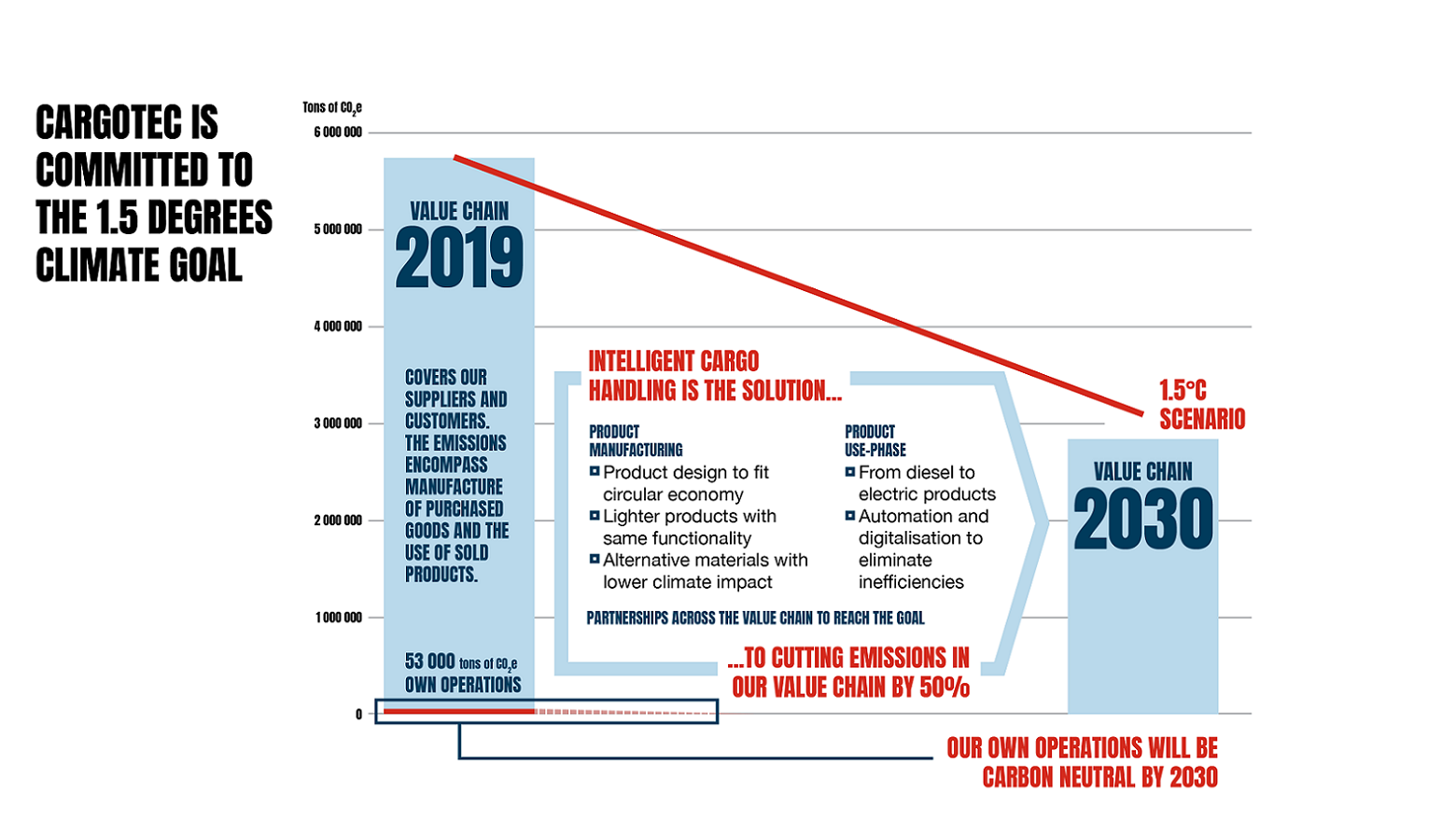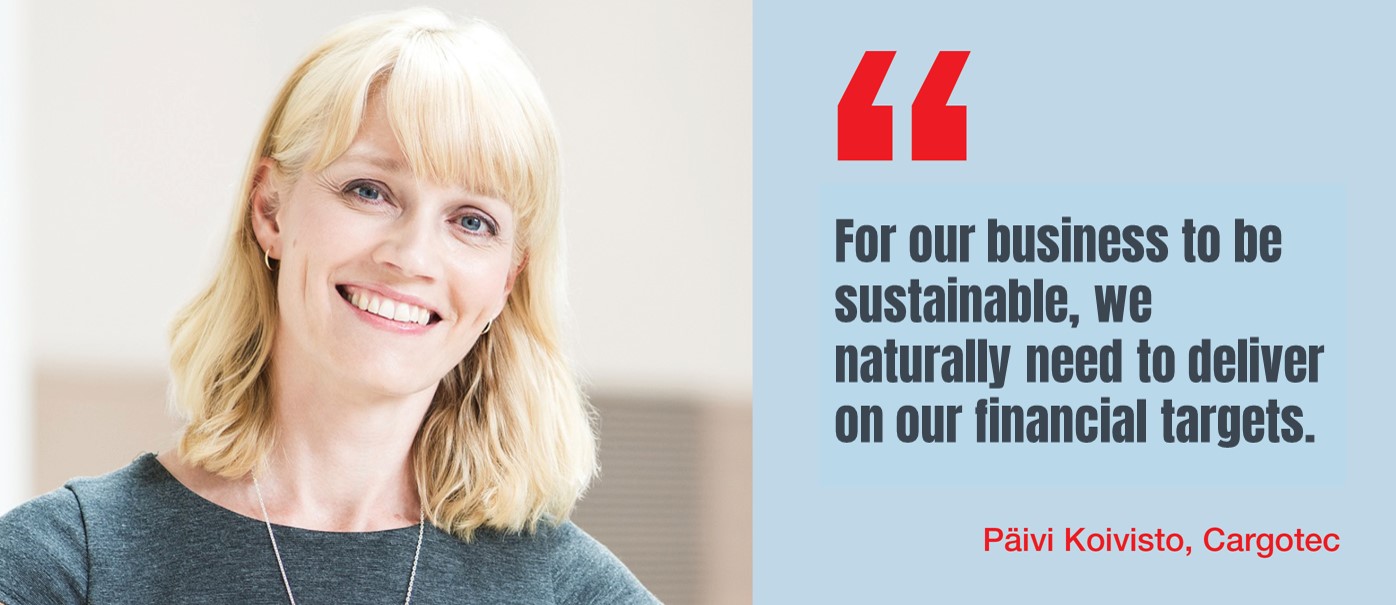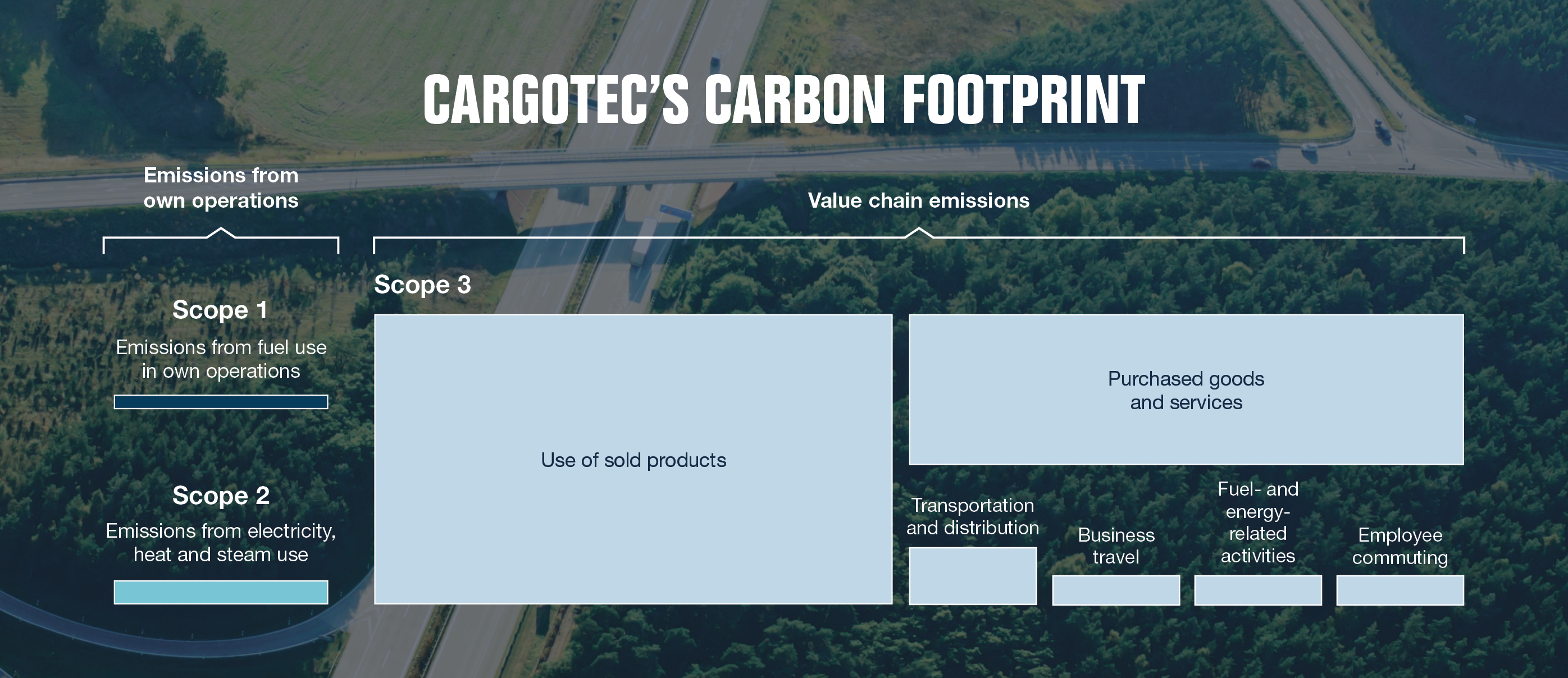Taking Cargotec’s climate goal from words to actions
05.11.2020
After announcing our Climate ambition of becoming a 1.5°C company, the real work to make this possible has initiated. Our sustainability team has analysed our current state and what needs to happen in order to reach our goal. My conclusion is that the target can be achieved, but we are not there yet and need to continue innovating.
In May 2020, Cargotec announced its climate goal: "Let’s reduce CO2 emissions at least 50 percent by 2030. This is critical for limiting global warming to 1.5 degrees."
After setting the goal, it has also been externally validated by the Science Based Targets initiative, verifying that the emission reduction target is in line with the latest climate science to limit global warming to 1.5°C. Now the actual hard work on achieving the target is starting and that goes hand in hand with becoming a profitable, sustainable 1.5°C organisation.
From words to actions
We wanted to avoid the risk of empty promises and really understand, where we stand today with our carbon footprint, and how far on the emission mitigation we can get with the currently known activities and technologies.

This is why we have done a thorough “gap analysis” to give a good basis for our future R&D, innovation (including raw material choices and sourcing) and sales. The work has been carried out by Cargotec’s Business Areas and selected cross-organisational working groups since mid-August.
In order to be successful in delivering the promise on our climate ambition, we need to find profitable ways in reducing our carbon footprint throughout the value chain. For our business to be sustainable, we naturally need to deliver on our financial targets. This means that we can’t sacrifice on the profit margins because of our climate targets. If investments are needed and being made, there needs to be an acceptable pay-back time - as with any other investment.
The true difference lies in our ability to develop low-carbon products
Roughly 60% of our footprint comes from the use-phase of our products. This means it is crucial that we develop climate-friendly products and services that our customers are willing to buy. Moreover, our climate target - reducing the CO2 emissions by at least 50% by 2030 - is an absolute reduction target. Even with increasing sales volumes, we need to be able to reduce our emissions by 50% from the 2019 level.
Our gap analysis showed this to be one of the biggest challenges; basically it boils down to the fundamental question of decoupling growth from emissions. Our strategy to electrify our product portfolio sets an excellent basis for our climate work but does not alone offer enough reduction potential. We need to innovate more!

Cooperation throughout the logistical chain
Getting our suppliers to join the climate work is as crucial as cooperation with our customers. Almost 40% of our carbon footprint comes from the production of the raw materials and components we use to produce our products.
Steel and steel-based products have the biggest negative impact out of all the purchased goods. The development of steel with low carbon footprint would have a key role in the future. Based on our sourcing team’s assessment, we can’t rely only on the CO2 reduction of the steel industry to bring enough emission savings for us to achieve our climate target. Hence, we would need to look into possibilities for lighter products (using less and different qualities of steel), alternative materials and all the opportunities that the circular economy can bring to us in using recycled materials, reusing or retrofitting our products, developing different sales models etc.
Towards carbon neutrality
Our climate goal includes the ambitious target to have our own operations carbon neutral by 2030. The emissions of our own operations arise from the energy use at assembly sites and offices, and use of fuels in service fleet and product testing.
Based on the assessment done, it seems that this target is achievable. About 40% of our own operations’ carbon footprint comes from use of electricity. The roadmap to carbon neutrality includes the target to source only renewable electricity. Another big contribution comes from the use of our service fleet. In order to achieve carbon neutrality, the plan is to increase remote services and use biofuels or electric vans.

The road ahead
In short, our gap analysis showed that the climate target can be achieved, but we are not there yet. We need to continue innovating and take the climate aspect into consideration in each and every decision we take. This is a great opportunity for all of us to be part of making cargo flow more efficient and developing a low-carbon society.
Next steps to achieve this is to fully integrate the climate targets into the Cargotec strategy, find motivating and tangible objectives and KPIs, prepare a viable plan to move towards the ultimate objective, and to measure our performance and progress to ensure desidered results.
